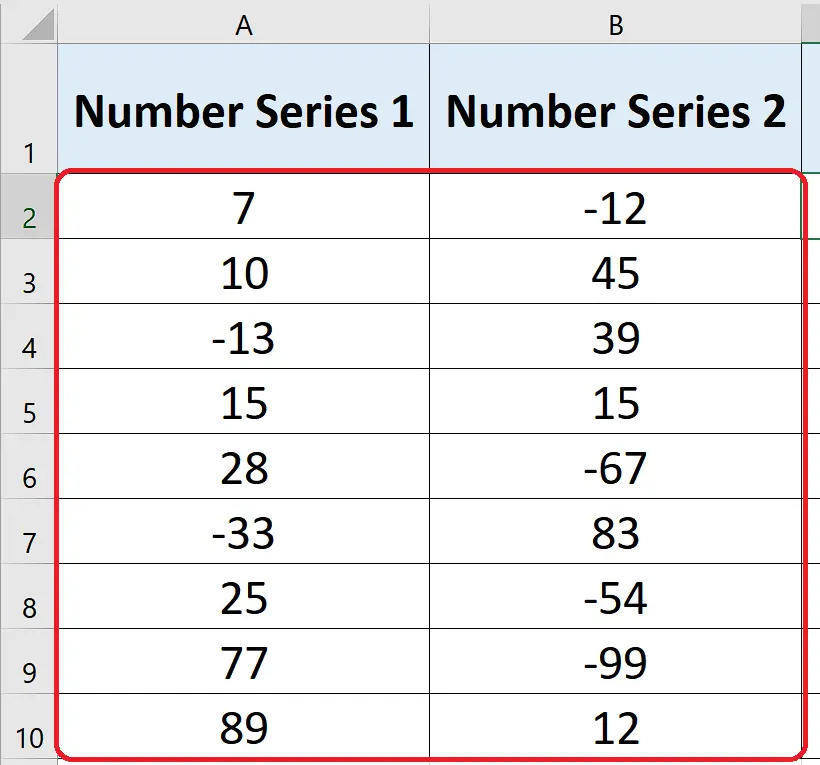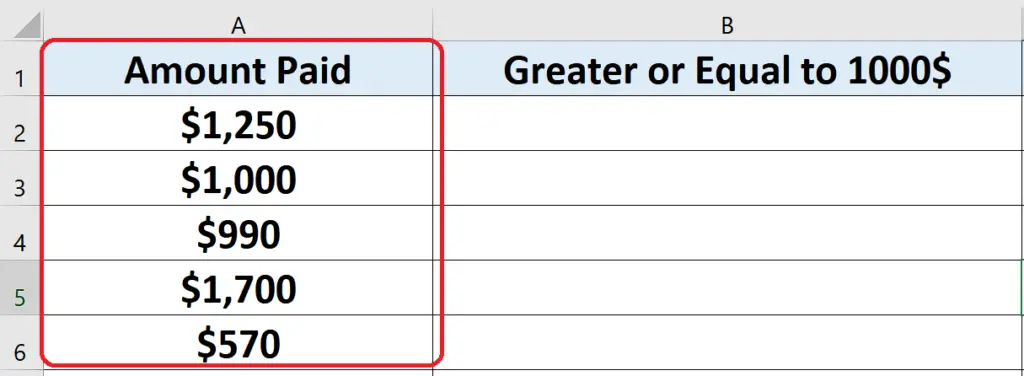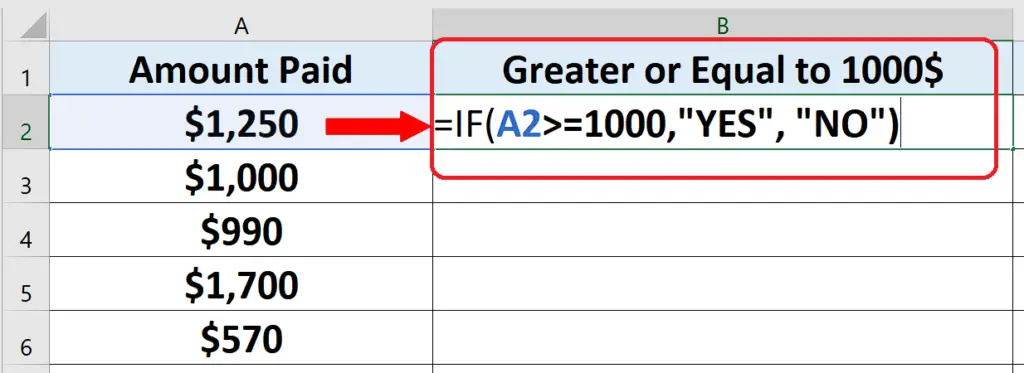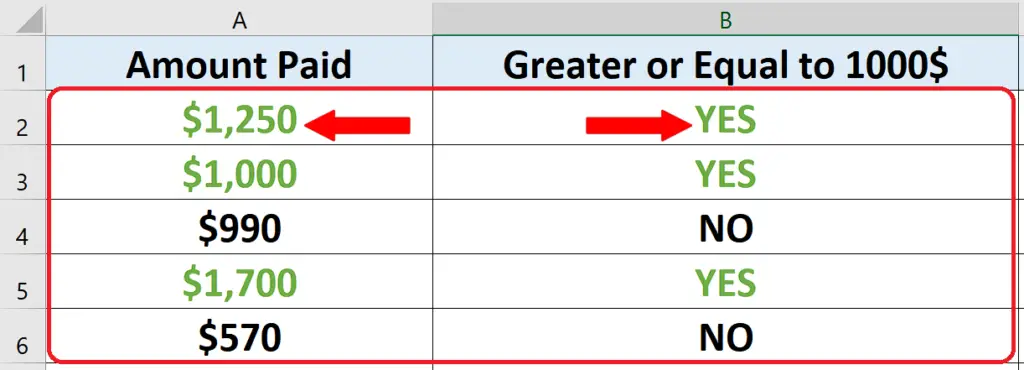How to use greater or equal to in Excel
Excel provides a variety of operators to check various logical conditions and Greater or Equal >= is also one of those operators which can be used to check if a value is either greater or equal to as compared to another value.
In this tutorial we will learn how we can use Excel’s greater or equal “>=” operator with a few very simple examples.
Example 1 – Using GREATER OR EQUAL >= directly to compare two values

We can use the GREATER OR EQUAL >= condition in Excel directly in any cell to compare two values. If either the values are equal to each other or one value is lesser and other is greater then the result will be TRUE or FALSE depending upon the values of the numbers compared. We can compare the text and numbers in a similar way so let’s take an example data set and compare values in it. The data set is shown above.
Step 1 – Use >= to compare the values directly in a cell

- Choose a suitable cell where you wish to get the results of the comparison.
- Use the following formula in that cell and press enter key.
= A2 >= B2
The result of the comparison will be displayed in this cell as soon as you press the enter key as shown in the picture above. The true and false results are highlighted with Green and Red for the ease of understanding.
Example 2: Using GREATER OR EQUAL >= inside IF functions
To use the “IF” function properly we need to understand the syntax of the formula and what parameters it requires to work. So let’s see the structure of the formula first and then we’ll apply this to a data set to see the formula in action.
Structure of IF Function:

The structure of the IF function in Excel is fairly simple and easy to comprehend. The generic formula of an IF Function is given above;
=IF(Logical_Test_Condition, Result_if_true, Result_if_false)
This function requires the following three parameters, which are explained below one by one.
- Logical_Test_Condition:
The first parameter is the logical test condition which will be evaluated by the formula. When constructing a test condition we can use the following logical operators to evaluate a logical scenario;
- = (equal to)
- > (greater than)
- >= (greater than or equal to) (this is what we are going to use today)
- < (less than)
- <= (less than or equal to)
- <> (not equal to)
- Result_if_true:
The formula evaluates the logical condition and if the condition is found correct (true) then this value will be chosen to appear as a result.
- Result_if_false:
This is the value which will be chosen as a result, when the test condition is found incorrect (false) after being evaluated in the formula.
Let’s assume that we have a data set of amounts paid to us for some tasks. We want to know in which tasks we earned more than 1000$. Then this is the perfect case where we can apply the “IF” function along with Greater or Equal (>=) condition. The data set is shown above.
Step 1- Select the cell and write the formula

- Select the cell where you want to implement the formula. In our case it will be B2.
- Now double click in the cell and write the formula in it as shown in the figure above and press enter.
=if(A2>=1000,”Yes”,”No”)
Step 2 – Extend the formula to work in other cells

- As soon as you press the enter button, you will see the result of this formula in cell B2 which will be “YES” as shown in the picture above.
- To implement the formula to the rest of the data, don’t write the formula all over again.
- Just select the bottom right corner of cell B2, where the formula was implemented.
- Drag down till the last row.
- This will automatically populate the formula in all these cells, as shown in the picture above. The true results are highlighted with Green for the ease of understanding.



